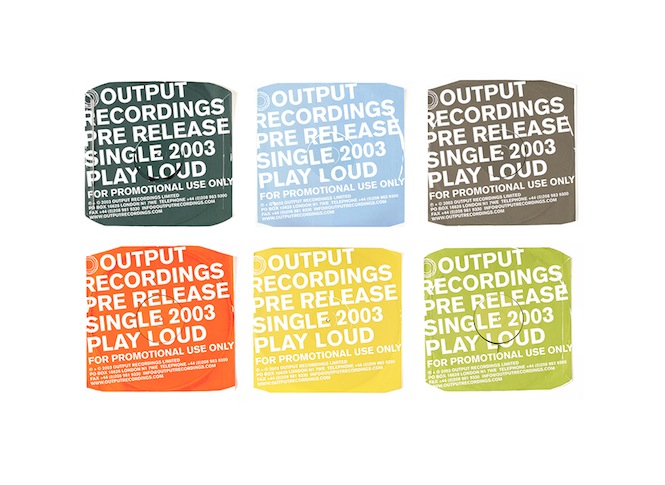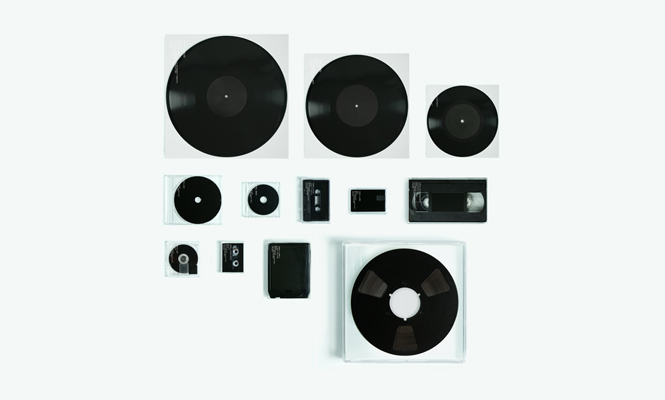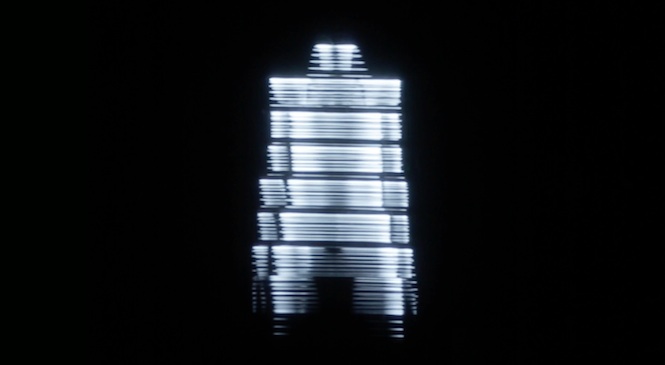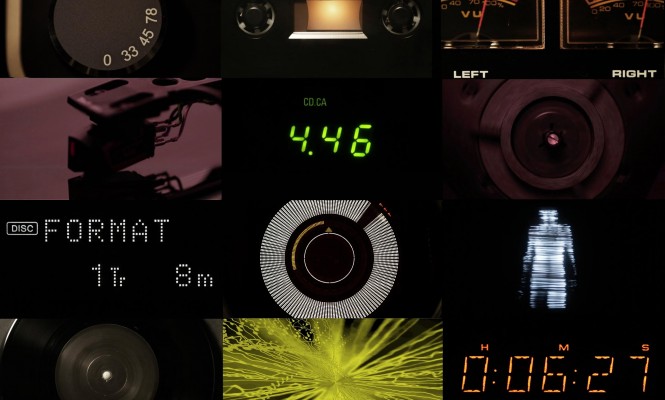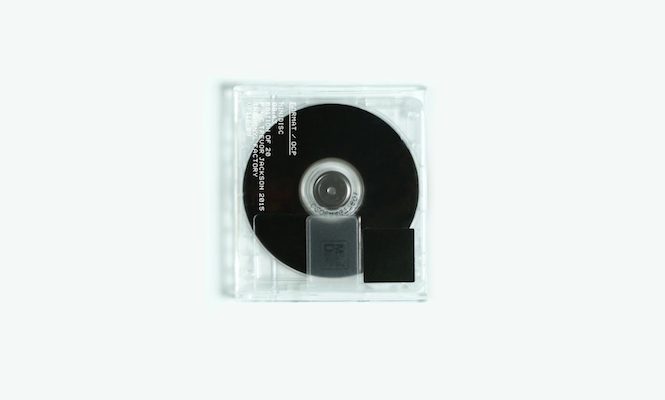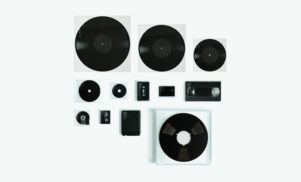Originally published by The Vinyl Factory
In this candid and personal interview, graphic designer, producer, DJ and label boss Trevor Jackson speaks out about the contemporary music industry and the simple joy of physical formats some 14 years since his last release.
Trevor Jackson has spent his career refining the art of meaning. As a young designer given his break by Mel Meladie’s Champion Records and enlisted to design sleeves for dance records fresh off pirate radio, his contact with the artists themselves was limited. His subsequent breakthrough relationship with Stereo MC’s may have addressed that in allowing him to work closely with musicians to form a coherent visual identity, but as he told Resident Advisor in 2011, something was still missing. “I made a conscious decision to only do records sleeves for people whose music I liked,” he explained. “I probably could have done a lot more work, but I only wanted to do things I felt inspired by.”
It was only a matter of time before Jackson assumed complete creative control and launched his own label, Output Recordings, taking as its logo a graphic visualization of a phono jack output which, perhaps in premonition of this very project, celebrated the beauty in the design of physical objects. Designing sleeves for releases he’d A&R-ed himself with artists he admired, Jackson manufactured a label which at its height was likened to the Factory Records of its era. Like Factory, Output had a manifesto that was shaped by and would go on to shape Jackson’s visual work over several years. For something to matter, the meaning had to be clear, and for that clarity to be achieved, less meant more.
“I’d prefer to have less things that are more important than more things that don’t mean as much,” Jackson explains, as we discuss the in and outs of his new album project F O R M A T in his studio. It’s a gleaming manifestation of that visual aesthetic, where synths are perfectly aligned on white table tops and his innumerable records are slotted into a flat solid grid connecting floor and ceiling.
Building on last year’s exhibition Yesterday Today Tomorrow Forever, the concept of F O R M A T is more prominent that ever before: 12 tracks, each initially released on a different physical music format (7”, 10”, 12”, CD, mini CD, cassette, MiniDisc, DAT, VHS, USB, eight-track and reel-to-reel) accompanied by an exhibition which doubles as a five-day interactive listening session. Each object is presented in the monochrome glory of its naked industrial design, where Jackson – the omnipotent designer and label boss – has for once removed himself from the process completely.
Yet while the aesthetic is archival and pregnant with meaning, the music is Jackson’s most personal and non-conceptual yet. His first new release for 14 years and a culmination of hours spent playing and experimenting, it’s a bold reflection of the period of refinement that has elapsed since Playgroup in 2001, and the coming together of form and content in one clear statement.
F O R M A T has such a powerful concept, how did you come to do this project?
I’ve been making music now and not releasing it for about 14 years. Just after I closed my label I didn’t really want anything to do with the business side of music anymore so I just started making music for fun again, which is something I hadn’t done for a long time.
The last time I released music was pre-iTunes – in fact it was pre-You Tube. So addressing putting out music now, in this period, for someone in this period of my life, I realized that the only way I want to put out music is conceptually, in a way that takes it beyond just the run-of-the-mill release.
I’ve worked in producing, designing record covers and doing music marketing since I was a teenager and the physical format of music is something that’s been something very important to me since I first started. So the idea for F O R M A T really came out of those thoughts.
And the exhibition will be the first place chance people will have the chance to hear the whole thing until the 12” comes out?
It’s a very democratic thing, because normally what happens is the press get sent the record three months before everyone else, but why should they? I’m certainly not doing this to make money, I’m doing this to make a statement, so it’s completely democratic. Whoever comes to the show will hear it at the same time. No one else is going to have the chance to buy the music before someone else does. And I think that’s kind of interesting as well.
At this stage the concept is very much the focus, as no one has heard the music.
It’s a concern for me, because I was so excited about the concept. I didn’t want that to overtake the music, and I’m really proud of the music. I made, like, 150 tracks and I picked 12 that I think work together and represent a lot of the different things that I’ve been working on. For me they’re as strong as the concept.
Has that been a difficult process after such a long time?
For me being involved, having a label and working with real geniuses – Maurice Fulton, Kieran Hebden, James Murphy – it begins to make you insecure about your own music. That’s one of the reasons why I haven’t released anything for so long, because I was so involved in helping put their records out, I’d come home and think I’ll never make anything as good as that.
How do you see the relationship with the music and the concept?
Well, they’re not really separate. They’re part and parcel of the same thing. I work in a virtually completely analogue studio now and even if some of the music was made on computer and made on laptops, I’ve always fed it back through my desk or bounced it to tape because I need things to be tangible. That’s what the whole project is about. For me, for anything to matter it needs to really exist. Physicality is really important to me. The nuances and the imperfections of physical objects is what interest me.
The previous show I did, Yesterday Today Tomorrow Forever, was an exhibition of photographs of details of a percentage of my records showing how the more you play a record the more you personalize it. By physical use something develops its own personality, which is actually created by yourself playing it. And this is an extension of that. There are so many different layers and levels to this project but the ritual of playing music and buying music is as important to me as the music itself.
The images from that exhibition are decidedly organic and cellular, but the initial feeling when you look at the way F O R M A T has been visually displayed is of something much more clinical.
I’ve been a music industry designer since I was a teenager, so when I approached this project I knew it was about the formats. This beauty of this is it’s what vinyl looks like, it’s what CDs look like, it’s what DATs look like. So the best thing for me was to do it as archival as possible. It was important for that the packaging was a homage to actual objects themselves and not necessarily about me.
So as a designer you’ve had to remove yourself from that process completely?
Yes, totally. The more I’ve been working on this project, the more I’ve learnt to appreciate the product design of so many beautiful tape machines and DAT machines, even down to the digital read-outs. Someone’s designed all these things, they’re all beautiful objects in themselves. For me that’s really, really important.
And there’s also a visual element, right?
On the VHS there is an edit of a video piece I’ve been working on for a while. So whoever buys the VHS is buying a unique piece of video art at the same time. I don’t want to say too much because I want people to be surprised. I’ve put together an audio-visual installation that runs alongside the music. So in the show there are moving images pieces for each format.
Is this in order to encourage people to spend longer with the music?
I know the albums that I listen to most are the ones on CD or on vinyl, they just are. And sadly the ones in my hard drive just get overlooked, which is part of the problem. I have a big issue with people wanting things more cheaply, more conveniently, quicker. I don’t think that those things necessarily lead to better things for music culture.
There are certainly dangers for listening as well as making music associated with having too much choice.
Without a doubt. In one way, without the digital marketplace I wouldn’t be able to access so much music that I’ve discovered. But then what’s better? For me as a younger DJ, I had to know every single record. If I wasn’t on top of every genre I felt like I wasn’t in the game. Now that’s not possible, I still have that mentality but I don’t have enough time. And that to me is sad. So I think maybe I’d prefer to have fewer things that are more important than more things that don’t mean as much.
Does the same apply then to the way you make music as well as consume it?
For me I’ve been through all the ways. When I started making music I could never have made music without my Akai 950 sampler. So I went from digital sampling to mixing it up with analogue gear to getting rid of all of it a few years ago and just working from a laptop, which was great at the time because I was transient. I didn’t have a home and most of my life was in storage.
But then when you’re sitting there and people are sending bills at you and emails and parking tickets through your computer to the same machine that you’re making music on, I started recognizing that machine as something bad in my life. I needed to step out of that. In the same way living and working at home is really difficult for me. I’ve always had to separate things and it’s the same thing with a computer. I started realizing I needed to get back to something more tangible.
So you’re working exclusively with analogue equipment again?
I’ve stripped my gear down, so I have less gear than I had, but certainly for me it’s two things. Firstly, the less stuff you have the easier it is to think, and secondly just being able to touch things for me makes it more fun. I started associating the computer in every way with bad experiences.
Most of the music I’ve made is certainly not fun playful music, but it’s been a lot more enjoyable to make than previous things I’ve been doing.
Like you said of the formats, someone’s made a decision to build these machines and every synth, sequencer or mixer has its own personality, or that of the person who designed it.
They’re all different. I’ve got an 808 there and I’ve never heard an 808 that sounds the same. But the thing is, in many ways I’m a novice to this. I’ve got machines that I don’t know how to use properly. I just play around and I’ve never read a manual in my life.
I know people who are complete synth heads who live and breathe this stuff. I just play around, I experiment, I don’t know what I’m doing half the time. Basically, I’m fascinated by things that light up and make funny noises. It’s always been like that, from video games to movies.
When I first started making music it was all sample based, and over the past 10 or 15 years I’ve learnt not to use samples any more. I might use little samples for kicks and snares and hi-hats, but all the music is completely written now.
Are you worried about it being seen as purely about nostalgia? The fact that you’ve got a USB in there surely defends you from that charge?
It is partly nostalgic, it’s romantic to me more than anything. I have an emotional connection to these objects. It means something to me to show that there is more to music than music itself.
I think about the Daft Punk campaign coming out and people were up in arms about this hype, but for me that’s not hype that’s just really good marketing. I grew up with Island Records, Grace Jones, ZTT, Frankie Goes To Hollywood and the marketing was incredible. You think about Stiff Records, Factory Records – great record labels that had really great manifestos and a great ethos about them, and all that to me is much more than just the music. If you just get a file sent to you or you get something from a blog, fair enough but I’m interested in far more.
Has the Internet diluted that thrill of ownership?
I always sit on the fence about stuff. I have strong opinions but I can see pros and cons of everything. I think in many ways, the positive side that you can discover music that you’d never have heard before probably outweighs the nerds that just want to be completist and just want to keep things for themselves.
I’m guilty of it myself – I do an NTS show every fortnight and I might play a record and not want to tell people what it is, not because I don’t want them to discover it but because I want them to make the effort to find out what it was. I remember back in the day hearing Tim Westwood playing this thing we would all call ‘The Piano Break’ and everyone was like, ‘what is that record?’ And it took us all months – it was an Isaac Hayes record sped up from 33rpm to 45rpm, but it took us all months to find out what that record was, and the fact now that you can just find out something straight away, I find that kind of sad.
This record has the potential to be that too, right? At this stage, when it’s only going to be released as a limited edition, lots of people aren’t going to know where the music has come from.
Part of me wants to put a thing in it saying ‘Do Not Play This Record Anywhere’. I like the idea that there’s only 25 of these MiniDiscs, so whoever buys this, for a period of time they’re the only people on this planet who can hear that track. And I wouldn’t mind – if I was a fan of someone’s music then I think that’s quite a special position to create for someone. That’s what I want to try and do.
F O R M A T is out now and available to buy from the VF shop and F O R M A T website.
